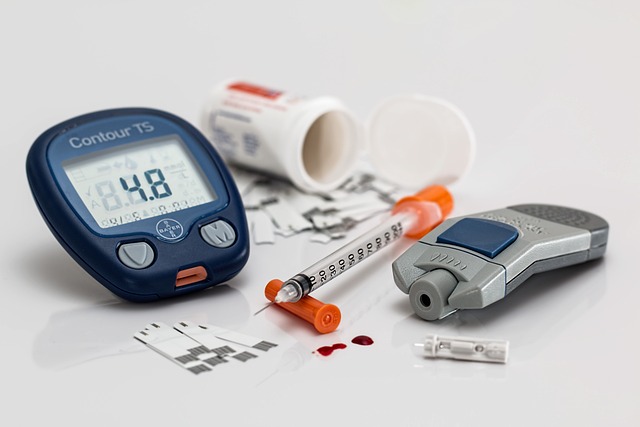Preventing disease is one of the most proactive steps you can take to safeguard your well-being and improve your quality of life. While genetics play a role in certain conditions, lifestyle choices—such as diet, exercise, stress management, and sleep—are powerful tools for reducing the risk of chronic diseases like heart disease, diabetes, cancer, and obesity. A personalized disease prevention plan takes into account your unique health profile, goals, and circumstances, empowering you to make informed decisions that support long-term wellness. In this article, we’ll guide you through creating a tailored prevention plan that prioritizes your health and helps you thrive.
Why Personalization Matters
No two people are alike when it comes to health. Factors such as age, gender, family history, environment, and personal habits all influence your risk for various diseases. A one-size-fits-all approach often falls short because it doesn’t address individual needs or challenges. By crafting a personalized prevention plan, you can:
- Focus on areas where you’re most vulnerable.
- Set realistic, achievable goals based on your current health status.
- Adapt strategies to fit your lifestyle, preferences, and resources.
Personalization ensures that your efforts are targeted, effective, and sustainable over time.
Step 1: Assess Your Current Health Status
The foundation of any prevention plan is understanding where you stand today. Start by gathering information about your physical, mental, and emotional health:
1. Medical History
Review your personal and family medical history:
- Are there hereditary conditions (e.g., heart disease, diabetes, cancer) that run in your family?
- Have you been diagnosed with any chronic conditions or risk factors (e.g., high blood pressure, cholesterol)?
2. Routine Screenings
Stay up-to-date with recommended screenings and check-ups:
- Blood pressure, cholesterol, and glucose tests.
- Cancer screenings (e.g., mammograms, colonoscopies, Pap smears).
- Bone density scans if you’re at risk for osteoporosis.
3. Lifestyle Habits
Evaluate your daily routines:
- Diet: What do you typically eat? Are you consuming enough fruits, vegetables, whole grains, and lean proteins?
- Physical activity: How often do you move, and what types of exercise do you enjoy?
- Sleep: Do you get 7-9 hours of quality sleep each night?
- Stress levels: How do you manage stress, and does it affect your health?
4. Mental and Emotional Well-Being
Consider how mental health impacts your overall wellness:
- Are you experiencing symptoms of anxiety, depression, or burnout?
- Do you have a strong support system of friends, family, or professionals?
If needed, consult your healthcare provider for a comprehensive assessment, including lab work and diagnostic tests.
Step 2: Identify Key Areas for Improvement
Based on your assessment, pinpoint specific areas where changes could lower your disease risk. Common focus areas include:
1. Nutrition
A balanced diet is essential for preventing chronic diseases:
- Reduce processed foods, added sugars, and saturated fats.
- Increase intake of nutrient-dense foods like leafy greens, berries, nuts, seeds, and fatty fish.
- Stay hydrated by drinking plenty of water throughout the day.
2. Physical Activity
Regular exercise strengthens the heart, boosts immunity, and improves mental health:
- Aim for at least 150 minutes of moderate-intensity aerobic activity per week.
- Incorporate strength training twice a week to build muscle and protect joints.
- Find activities you enjoy, whether it’s walking, dancing, swimming, or yoga.
3. Weight Management
Maintaining a healthy weight reduces the risk of conditions like type 2 diabetes and cardiovascular disease:
- Use tools like BMI calculators or body composition measurements to assess your weight.
- Focus on gradual, sustainable weight loss if needed (1-2 pounds per week).
4. Sleep Hygiene
Quality sleep supports immune function, cognitive health, and emotional resilience:
- Establish a consistent bedtime routine.
- Limit screen time before bed and create a relaxing sleep environment.
- Address underlying issues like sleep apnea or insomnia with professional help.
5. Stress Reduction
Chronic stress contributes to inflammation and increases disease risk:
- Practice mindfulness techniques like meditation, deep breathing, or journaling.
- Engage in hobbies or activities that bring joy and relaxation.
- Seek therapy or counseling if necessary.
6. Avoiding Harmful Behaviors
Eliminate or reduce behaviors that harm your health:
- Quit smoking or vaping.
- Limit alcohol consumption to moderate levels (if applicable).
- Avoid exposure to environmental toxins whenever possible.
Step 3: Set SMART Goals
Once you’ve identified areas for improvement, set Specific, Measurable, Achievable, Relevant, and Time-bound (SMART) goals to guide your progress:
- Example: “I will walk 30 minutes a day, five days a week, for the next month.”
- Example: “I will replace sugary drinks with water or herbal tea every day starting tomorrow.”
Breaking larger objectives into smaller, actionable steps makes them less overwhelming and easier to achieve.
Step 4: Build Healthy Habits Gradually
Change doesn’t happen overnight. To ensure lasting results:
- Start small: Focus on one habit at a time to avoid feeling overwhelmed.
- Use reminders: Set alarms, sticky notes, or calendar alerts to stay consistent.
- Celebrate milestones: Reward yourself for sticking to your plan, even for minor achievements.
For example, if improving nutrition is a priority, begin by swapping out one unhealthy snack per day with a healthier option. Once that becomes routine, tackle another area.
Step 5: Monitor and Adjust
Regularly review your progress to see what’s working and what needs adjustment:
- Track key metrics like weight, waist circumference, or energy levels.
- Reflect on how new habits impact your mood, productivity, and overall well-being.
- Be flexible: Life circumstances may require you to adapt your plan without losing sight of your goals.
Consider using apps or journals to log your journey, making it easier to identify patterns and celebrate successes.
Step 6: Partner With Healthcare Professionals
You don’t have to navigate your prevention plan alone. Collaborate with experts who can provide guidance and accountability:
- Primary Care Physician : For general health assessments and referrals.
- Registered Dietitian : For personalized nutrition advice.
- Fitness Trainer : To design safe and effective workout programs.
- Mental Health Professional : To address emotional and psychological barriers.
Additionally, consider genetic testing or advanced biomarker analysis if you want deeper insights into your predispositions and optimal interventions.
Common Challenges and Solutions
Creating a personalized prevention plan isn’t always easy. Here’s how to overcome common hurdles:
Challenge 1: Lack of Motivation
Staying motivated can be tough, especially when results aren’t immediate.
Solution : Focus on intrinsic rewards, like feeling more energetic or sleeping better. Surround yourself with supportive people who share your goals.
Challenge 2: Busy Schedule
Finding time for self-care can feel impossible in a hectic world.
Solution : Integrate healthy habits into your existing routine. For instance, prep meals on weekends or take short walks during breaks.
Challenge 3: Plateaus
Progress stalls occasionally, which can feel discouraging.
Solution : Reassess your approach, try new activities, or tweak your diet. Remember, plateaus are temporary and part of the process.









